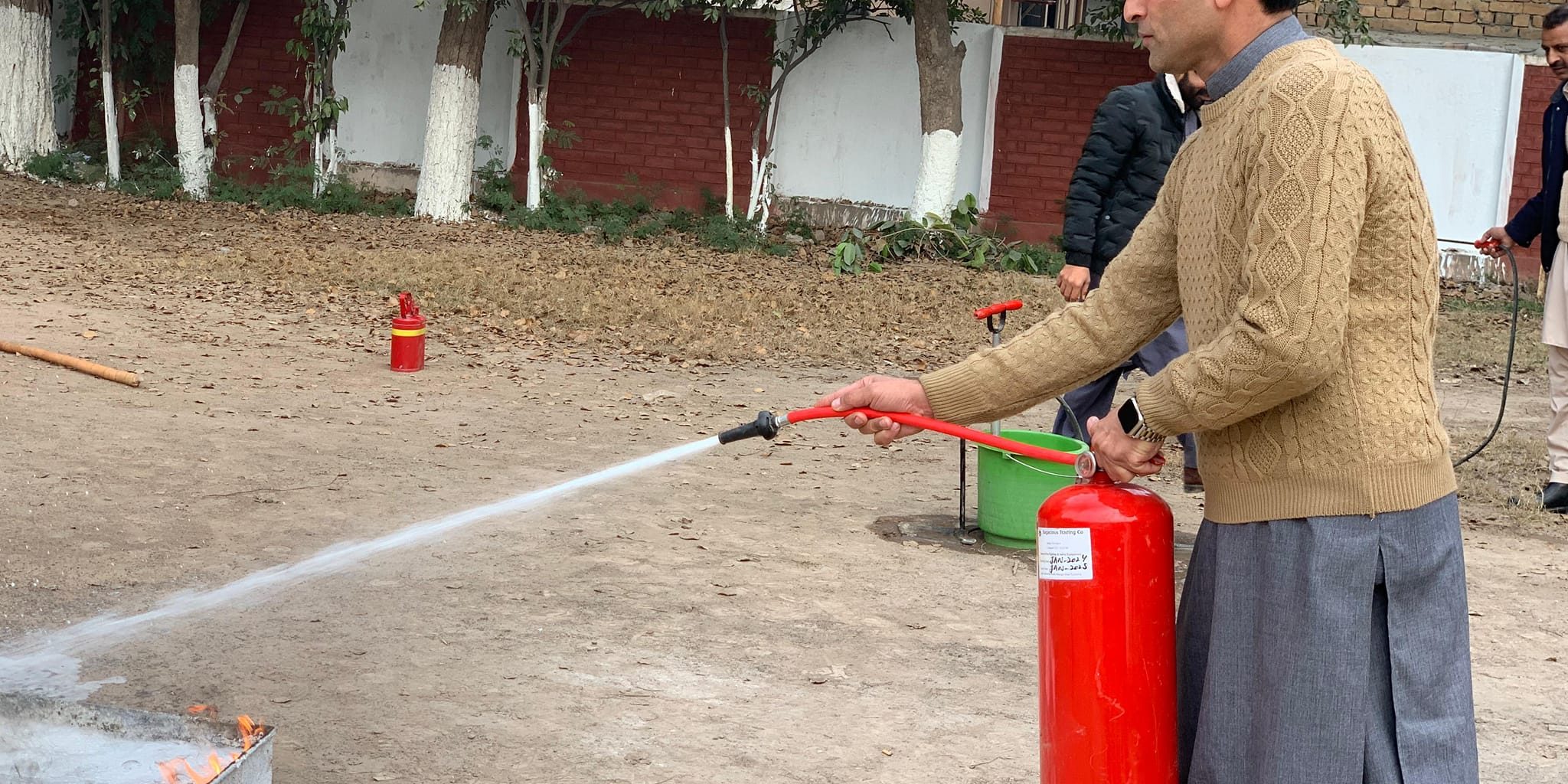Fire safety is a critical aspect of any industry, workplace, or residential setting. Ensuring the safety of lives and properties against the devastating effects of fire requires comprehensive knowledge, cutting-edge technology, and skilled professionals. In this regard, the National Institute of Fire Technology (NIFT) emerges as a beacon of excellence, offering specialized education and training to equip individuals with the expertise needed to mitigate fire risks effectively.
Understanding the National Institute of Fire Technology
The National Institute of Fire Technology is a renowned institution dedicated to the advancement of fire safety education and research. Established with the mission of fostering innovation and excellence in fire prevention, detection, and suppression, NIFT plays a pivotal role in shaping the future of fire safety professionals.
Importance of Fire Safety Education
In today’s fast-paced world, where technological advancements and industrialization are on the rise, the importance of fire safety education cannot be overstated. From manufacturing plants and commercial establishments to residential complexes and public infrastructure, the risk of fire-related incidents looms large. Proper education and training in fire safety principles and practices are essential to minimize these risks and ensure the safety of individuals and assets.
Role of NIFT in Promoting Fire Safety
At NIFT, a diverse range of programs and courses are offered to cater to the evolving needs of the industry. These include:
- Diploma in Fire and Safety Engineering: This program equips students with a comprehensive understanding of fire dynamics, risk assessment, emergency response planning, and fire safety regulations.
- Bachelor of Science (B.Sc.) in Fire and Industrial Safety: Designed to provide in-depth knowledge of fire engineering principles, hazard analysis, safety management systems, and disaster preparedness.
- Master of Science (M.Sc.) in Fire Safety Engineering: An advanced program focusing on specialized areas such as fire dynamics modeling, fire protection systems design, and forensic fire investigation.
Collaborative Initiatives and Research
In addition to academic programs, NIFT actively engages in collaborative initiatives and research projects aimed at advancing the field of fire safety. Partnerships with industry stakeholders, government agencies, and international organizations facilitate knowledge exchange, technology transfer, and the development of innovative solutions.
The Scope of Fire Safety Technology in Pakistan
In Pakistan, the need for effective fire safety measures is underscored by the rapid pace of urbanization, industrial growth, and infrastructure development. With the establishment of the Government Institute of Leather Technology in Gujranwala, Pakistan is taking proactive steps towards enhancing fire safety in the manufacturing sector. This initiative not only addresses the specific challenges faced by the leather industry but also serves as a model for other sectors to emulate.
Leveraging Technology for Fire Safety
In recent years, advancements in technology have revolutionized the field of fire safety. From state-of-the-art fire detection systems and automatic extinguishing devices to advanced modeling techniques and simulation software, there are myriad tools available to mitigate fire risks effectively. By harnessing the power of technology, organizations can enhance their preparedness, response capabilities, and overall resilience to fire incidents.
Future Prospects and Opportunities
As awareness about fire safety continues to grow, so do the opportunities for professionals trained in this field. Graduates of programs offered by institutions like NIFT are well-equipped to pursue rewarding careers in various sectors, including:
- Industrial Safety Management: Ensuring compliance with safety regulations, conducting risk assessments, and implementing preventive measures in industrial settings.
- Emergency Response and Disaster Management: Coordinating emergency response efforts, conducting drills and simulations, and managing crisis situations effectively.
- Consulting and Advisory Services: Providing expert advice, conducting safety audits, and developing customized solutions to address specific fire safety challenges.
Embracing a Culture of Fire Safety
Fire safety is not just a regulatory requirement; it is a mindset that should permeate every aspect of our lives. Whether in the workplace, at home, or in public spaces, fostering a culture of fire safety is paramount to reducing the incidence and severity of fire-related incidents. This entails:
- Education and Awareness: Educating individuals about fire hazards, preventive measures, and emergency response procedures is the first step towards building a fire-safe environment. Awareness campaigns, training sessions, and interactive workshops can help instill a sense of responsibility and preparedness among the general population.
- Adoption of Best Practices: Implementing best practices in fire prevention, detection, and suppression is essential for minimizing risks and maximizing safety. This includes proper storage and handling of flammable materials, regular maintenance of fire safety equipment, and adherence to building codes and standards.
- Continuous Improvement: Fire safety is an evolving field, with new technologies, methodologies, and regulations emerging regularly. Organizations must stay abreast of these developments and continually assess and improve their fire safety protocols to ensure effectiveness and compliance.
Harnessing Technology for Enhanced Fire Safety
In today’s digital age, technology is a powerful ally in the fight against fire hazards. From advanced sensors and alarms to real-time monitoring systems and predictive analytics, the latest innovations offer unprecedented capabilities in fire detection, prevention, and mitigation. Some notable technological advancements include:
- Smart Fire Detection Systems: These systems utilize sensors, cameras, and artificial intelligence to detect smoke, heat, or flames in real-time. By providing early warning alerts and pinpointing the location of fire incidents, smart detection systems enable swift response and containment measures.
- Automated Suppression Systems: Automated suppression systems, such as sprinklers and foam generators, can deploy rapidly upon detecting a fire, effectively extinguishing flames before they spread. These systems are particularly valuable in high-risk environments where human intervention may be limited or delayed.
- Data-driven Decision Making: By leveraging data analytics and modeling techniques, organizations can gain insights into fire risk factors, vulnerability assessments, and response optimization. Predictive modeling helps identify potential fire hotspots and prioritize preventive measures accordingly.
Collaborative Efforts for Fire Safety Enhancement
Achieving comprehensive fire safety requires collaboration and coordination among various stakeholders, including government agencies, industry associations, educational institutions, and the community at large. Key areas of collaboration include:
- Policy Development and Enforcement: Government agencies play a central role in formulating and enforcing fire safety regulations and building codes. Collaborative efforts between policymakers, regulators, and industry experts are essential to ensure that regulations are practical, enforceable, and conducive to public safety.
- Knowledge Sharing and Capacity Building: Educational institutions, research organizations, and industry bodies can collaborate to disseminate knowledge, conduct research, and provide training programs aimed at enhancing fire safety awareness and expertise. By sharing best practices and lessons learned, stakeholders can collectively raise the bar for fire safety standards.
- Public-Private Partnerships: Collaboration between the public and private sectors can drive innovation and investment in fire safety technologies and infrastructure. Public-private partnerships enable the pooling of resources, expertise, and funding to address common challenges and implement scalable solutions.
Conclusion: A Collective Responsibility
In conclusion, fire safety is a collective responsibility that requires proactive measures, continuous vigilance, and concerted efforts from all stakeholders. By embracing a culture of fire safety, harnessing the power of technology, and fostering collaboration, we can create safer environments for everyone. Let’s work together to minimize the risk of fire-related tragedies and protect lives and livelihoods as we build a better future.
For further insights into fire safety and related topics, you may explore the following resources:
- Government Institute of Leather Technology Gujranwala Pakistan Leads the Way in Leather Education and Innovation
- The Scope of Food Science and Technology in Pakistan

